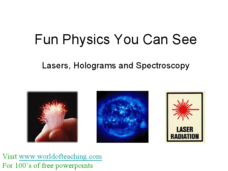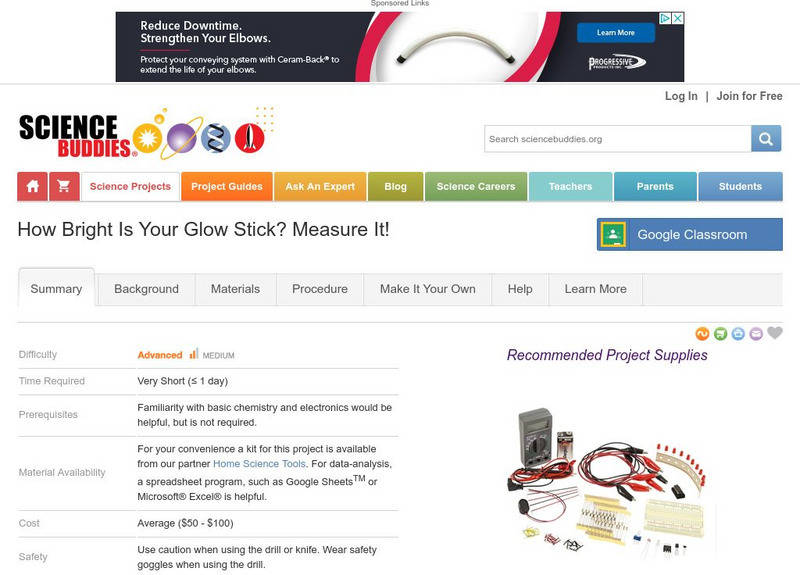Curated OER
Fun Physics You Can See
Fascinating aspects of electromagnetic radiation and its use in obtaining and transferring information are described here. Learners will find the connections to current technology interesting. Although the slides are text-heavy, they do...
Curated OER
Cool Lights
Students investigate how and why deep-sea organisms produce light. They examine how these processes can be used to study deep ocean environments.
Science Buddies
Science Buddies: How Bright Is Your Glow Stick? Measure It!
Objects that glow in the dark hold a special place in the imagination of both children and adults. The lights go out at night, but these odd things refuse to disappear. Where does the light come from? Do they work in any climate? In this...
Nobel Media AB
The Nobel Prize: Antoine Henri Becquerel Biographical
Read about Becquerel's (1852-1908 CE) contributions to the world of science, which earned him The 1903 Nobel Prize in Physics. This detailed biography includes important dates as well as an overview of his world with radioactivity.
Science Education Resource Center at Carleton College
Serc: Who Has the Light?
This instructional activity explores bioluminescence. Discover which deep-sea organisms are capable of bioluminescence, and how this ability benefits these organisms. In this activity, students compare and contrast chemiluminescence,...
University of California
Uscb: The Bioluminescence Web Page
A very detailed covering of bioluminescence including myths, organisms, chemistry, physiology, and photos. Contains many links for further information.
University of California
University of California at Santa Barbara: Chemistry of Bioluminescence
A very nice animated basic explanation of the difference between fluorescence and bioluminescence.








